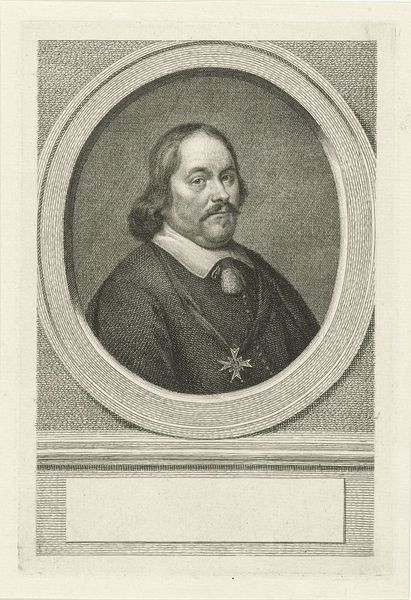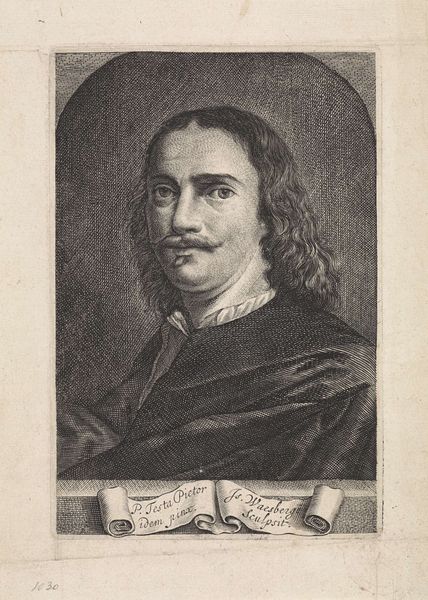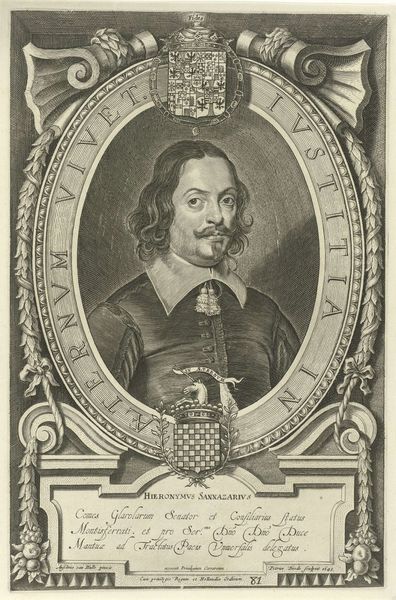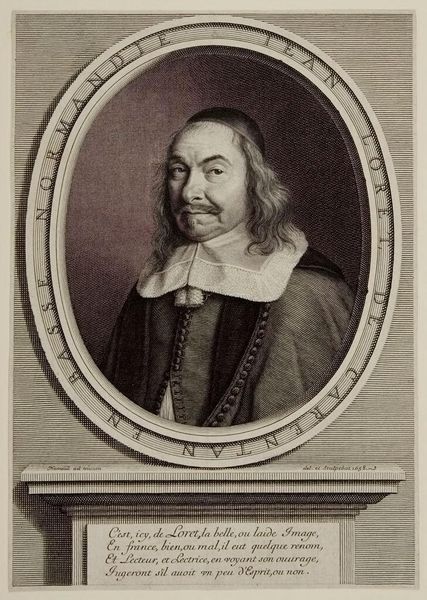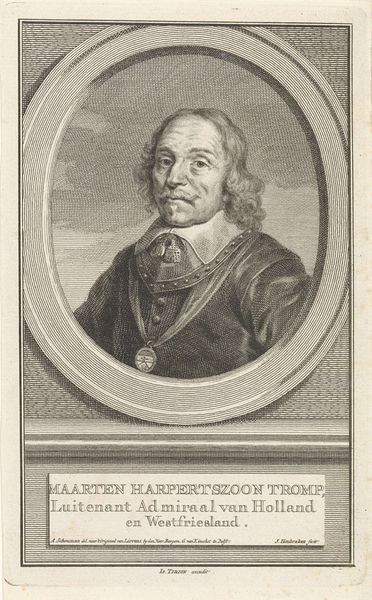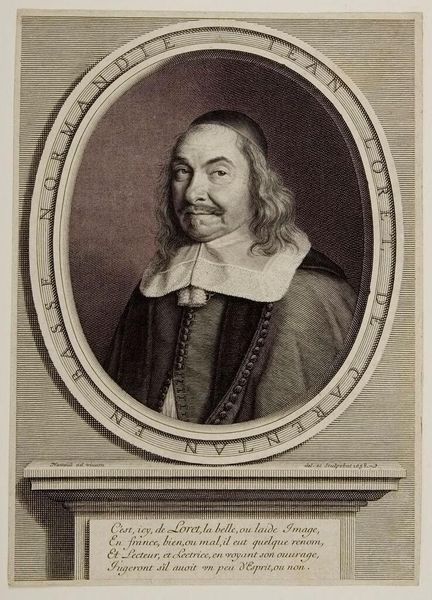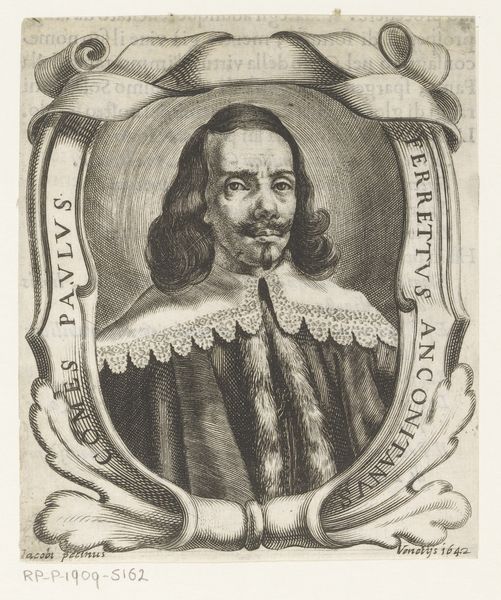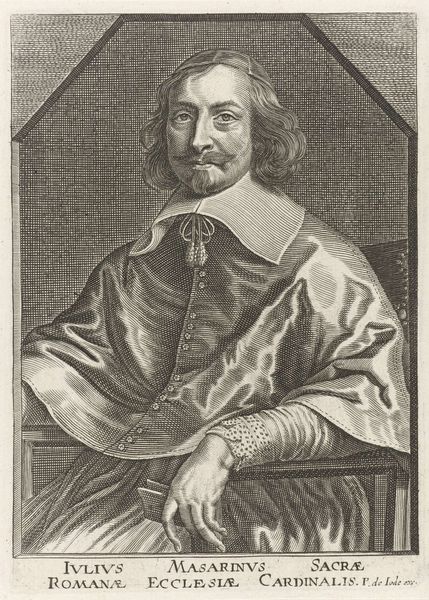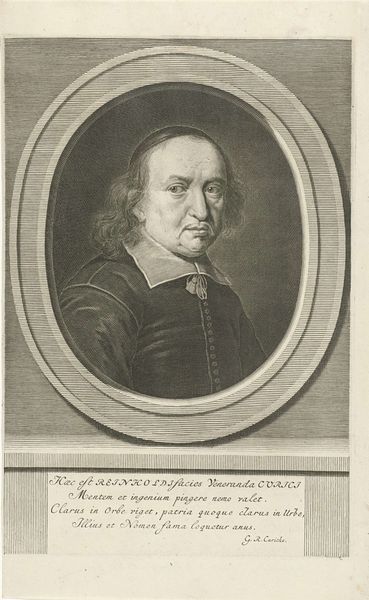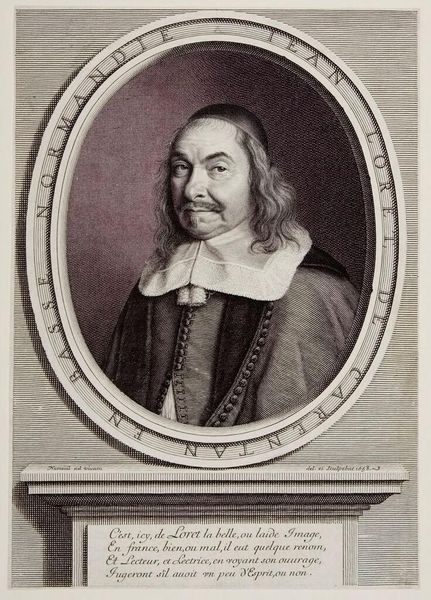
print, engraving
#
portrait
#
baroque
# print
#
old engraving style
#
portrait reference
#
portrait drawing
#
engraving
Dimensions: height 265 mm, width 185 mm
Copyright: Rijks Museum: Open Domain
Editor: This is a portrait of Admiral Michiel Adriaensz. de Ruyter, an engraving by Bernard Picart dating back to 1728. I'm struck by how it projects this image of Dutch power, but in quite a contained, almost bureaucratic way. What historical dynamics are at play in how he’s portrayed here? Curator: I think that “contained” feeling is key. Think about the historical moment: de Ruyter was a celebrated figure, a symbol of Dutch maritime prowess. But consider the engraving itself, a print. It allows for mass production and dissemination of this image. This wasn't just about glorifying an individual, it was about crafting a national identity, especially crucial after the Dutch Golden Age when the nation sought to retain its powerful image in a changing geopolitical landscape. How does this method of portraying national heroes, different from, say, an oil painting, affect its role in cultural memory? Editor: That makes sense. A print democratizes the image. It’s not some unique object only the elite can access. It's designed for wider circulation. The Baroque style also stands out— that grandeur and theatricality feels intentional for projecting authority. Curator: Exactly! It evokes power and prestige, and simultaneously translates it into a standardized, reproducible format, transforming an individual into an icon. But the question is, whose power does this icon serve? Was this image equally embraced by all social classes within the Dutch Republic? Who benefits from the romanticization of military strength? Editor: I hadn’t considered that. It prompts a different angle on the whole narrative—from being one solely about national pride to perhaps one also about social control or perhaps promoting the agenda of specific social classes and leaders.. Curator: Precisely! That tension between national unity and the potential for it to mask underlying social divisions is crucial. These kinds of images served a very real purpose in shaping Dutch identity and cultural values, perhaps as tools used in solidifying particular class or political interests. Editor: Thanks, that adds a whole new level of understanding for me, really complex and thought-provoking. I appreciate learning about both national pride but also its historical complexities and internal power dynamics. Curator: Likewise! By considering the context, we unearthed not only the artistic qualities of the print but also the deeper implications surrounding cultural production, nationalism, and potential social and political implications.
Comments
No comments
Be the first to comment and join the conversation on the ultimate creative platform.
